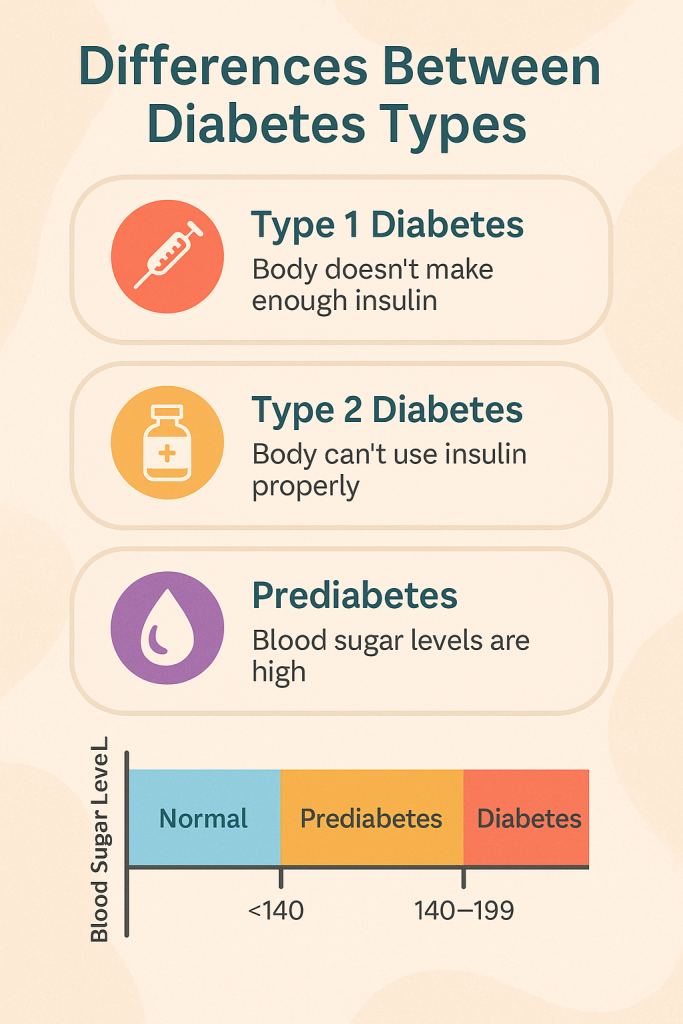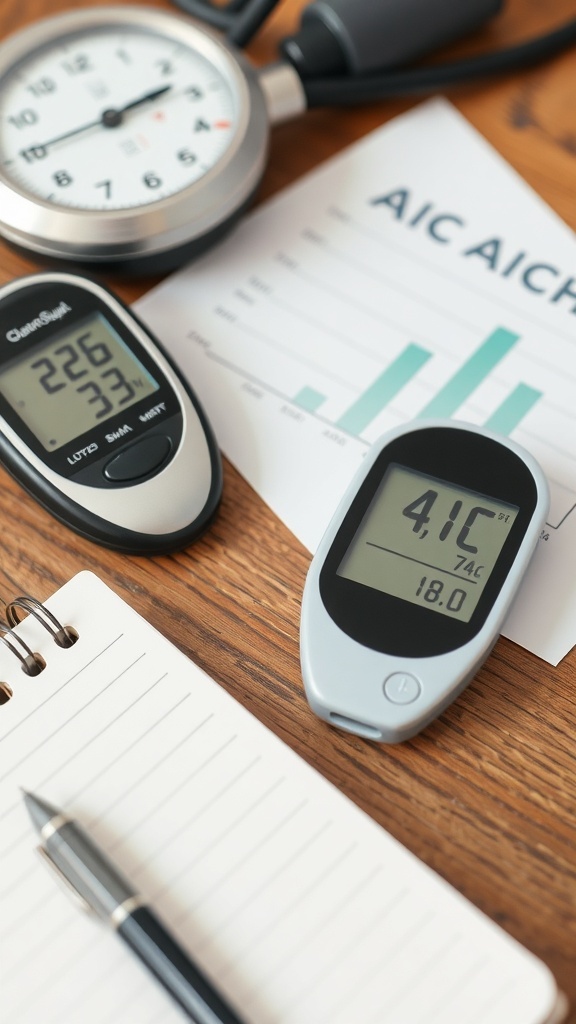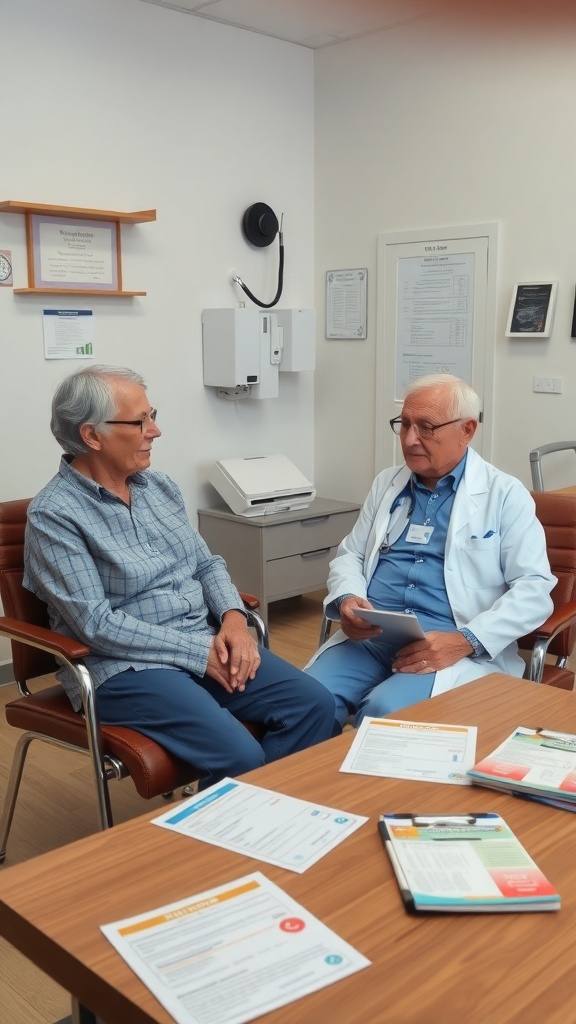Managing diabetes can be a challenge, especially as you enter retirement, but a little knowledge can go a long way. Here are seven key diabetes basics that every retiree should be aware of to help maintain a healthy lifestyle and manage their condition effectively. From understanding blood sugar levels to dietary tips, these essentials will offer a clearer picture of living well with diabetes.
Understand The Types Of Diabetes – Type 1, Type 2, And Prediabetes.

Diabetes can be a bit confusing, especially with different types to consider. The image shows a simple chart that breaks down the three main types: Type 1, Type 2, and Prediabetes. Each type has its own characteristics and management strategies.
Type 1 diabetes is often diagnosed in children and young adults. It occurs when the body doesn’t produce insulin. People with Type 1 need to take insulin daily to manage their blood sugar levels. This type is less common but requires careful monitoring.
Type 2 diabetes is more prevalent and usually develops in adults. It happens when the body becomes resistant to insulin or doesn’t produce enough. Lifestyle changes, like diet and exercise, can help manage this type. Some may also need medication.
Prediabetes is a warning sign. It means blood sugar levels are higher than normal but not high enough for a diabetes diagnosis. This stage is crucial because it’s possible to reverse it with healthy lifestyle choices. The chart highlights these differences clearly, making it easier to understand each type.
Know Your Numbers – Blood Sugar Levels, A1C, Blood Pressure.

Understanding your health numbers is key to managing diabetes effectively. The image shows essential tools for monitoring blood sugar levels, A1C, and blood pressure. Each number tells a part of your health story.
The blood glucose meter displays a reading of 226, which indicates high blood sugar. Keeping track of these levels helps you make informed decisions about your diet and medication. The A1C reading of 4.1% suggests good long-term blood sugar control. Regular checks can help you stay on top of your health.
Blood pressure is another critical number. The device in the image shows a reading of 33, which may refer to diastolic pressure. Keeping your blood pressure in check is vital for overall health, especially for those with diabetes.
Using a notebook for notes, as seen in the image, can help you track these numbers over time. Writing down your readings can provide insights for discussions with your healthcare provider.
Eat Balanced Meals – Focus On Fiber, Lean Protein, And Whole Grains.

Eating balanced meals is key for managing diabetes, especially for retirees. The image shows a colorful plate filled with grilled chicken, a variety of fresh vegetables, and whole grains. This combination is perfect for keeping blood sugar levels steady.
Fiber is essential. It helps slow down sugar absorption, which is great for blood sugar control. Foods like leafy greens, carrots, and whole grains like brown rice or quinoa are excellent choices. They not only provide fiber but also essential nutrients.
Lean protein, like the grilled chicken in the image, is another important part of a balanced meal. It helps keep you full and supports muscle health. Pairing protein with fiber-rich veggies makes for a satisfying dish.
Whole grains are a must. They offer more nutrients than refined grains and help maintain energy levels. Think brown rice, whole grain bread, or oats. These foods help you feel fuller longer and provide steady energy throughout the day.
So, next time you plan a meal, think about including a mix of lean protein, fiber-rich veggies, and whole grains. It’s a simple way to support your health and enjoy delicious food!
Stay Active Daily – Walking, Swimming, Or Light Strength Training.

Staying active is key for managing diabetes, especially for retirees. The image shows a lovely couple walking hand in hand by a serene lake. This simple activity not only keeps them fit but also allows them to enjoy nature together.
Walking is a fantastic way to get moving. It’s gentle on the joints and can be done almost anywhere. Just a daily stroll can help regulate blood sugar levels and improve overall health.
Swimming is another great option. It’s low-impact and works out the whole body. Plus, it’s refreshing, especially on warm days. Whether in a pool or a lake, swimming can be a fun way to stay active.
Light strength training is also beneficial. Using light weights or resistance bands can help build muscle and improve metabolism. This is especially important for those managing diabetes.
Finding activities you enjoy makes it easier to stay consistent. Whether it’s walking, swimming, or light strength training, the goal is to keep moving. So grab a friend or partner, like the couple in the image, and enjoy staying active together!
Keep Stress In Check – Meditation, Breathing, Or Hobbies.

Managing stress is key for everyone, especially retirees. The image shows a person meditating in a calm, bright space. This peaceful setting highlights the importance of finding moments of tranquility in our busy lives.
Meditation can be a fantastic tool for reducing stress. It helps clear the mind and brings focus. Just a few minutes a day can make a big difference. Breathing exercises are also effective. They can help ground you and bring a sense of calm.
Engaging in hobbies is another great way to keep stress at bay. Whether it’s painting, gardening, or reading, hobbies provide a wonderful escape. They allow you to express yourself and enjoy your time.
Creating a relaxing environment, like the one in the image, can enhance your meditation or hobby experience. Soft lighting, plants, and a cozy chair can make all the difference. Remember, taking time for yourself is not just a luxury; it’s a necessity for your well-being.
Regular Doctor Visits – Early Detection Makes A Huge Difference.

Regular doctor visits are key for managing diabetes, especially for retirees. The image shows a friendly interaction between a patient and a doctor in a consultation room. This setting highlights the importance of open communication about health concerns.
During these visits, doctors can monitor blood sugar levels and adjust treatment plans as needed. Early detection of any issues can prevent complications down the road. The patient looks engaged, which is a great sign that he is taking his health seriously.
Having a good relationship with your healthcare provider can make a big difference. It encourages you to ask questions and share any worries you might have. This proactive approach helps in managing diabetes effectively.
So, don’t skip those appointments! They are not just routine; they are crucial for your well-being.
Take Medications As Prescribed – Don’T Skip Or Adjust Without Guidance.

In the image, two seniors are seated at a kitchen table, carefully reviewing their medications. One is pointing at a notepad while the other listens attentively. This scene emphasizes the importance of managing diabetes through proper medication adherence.
When it comes to diabetes, taking medications as prescribed is key. Skipping doses or adjusting your medication without talking to your doctor can lead to serious health issues. It’s easy to think that you can manage on your own, but every change should be guided by a healthcare professional.
Having conversations about your medications can help clarify any doubts. If you’re unsure about how or when to take your meds, don’t hesitate to ask your doctor or pharmacist. They can provide the best advice tailored to your needs.
Staying organized can also make a difference. Consider using a pill organizer or setting reminders on your phone. This can help you keep track of your doses and ensure you stick to your routine. Remember, managing diabetes is a team effort, and your healthcare team is there to support you.